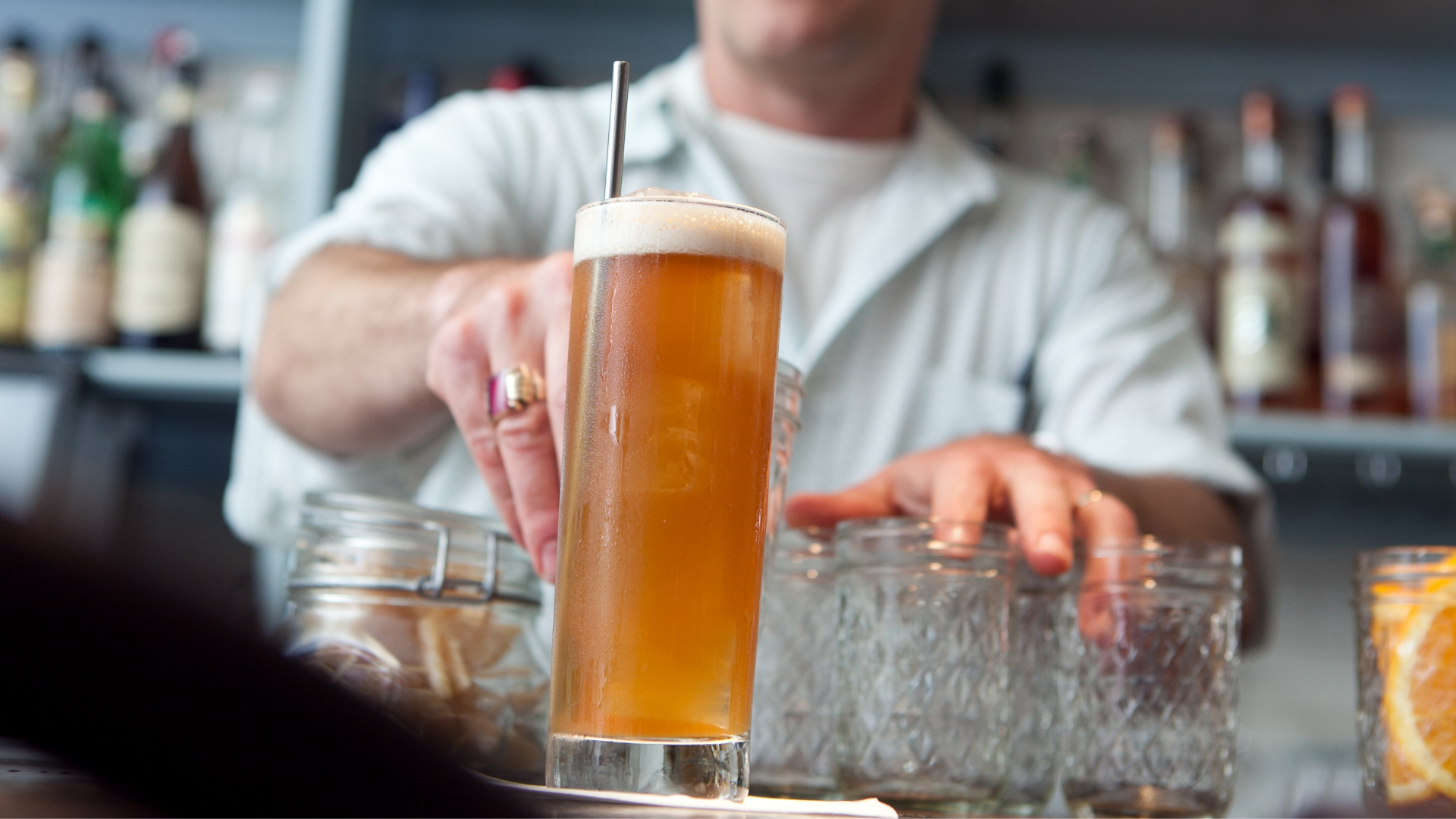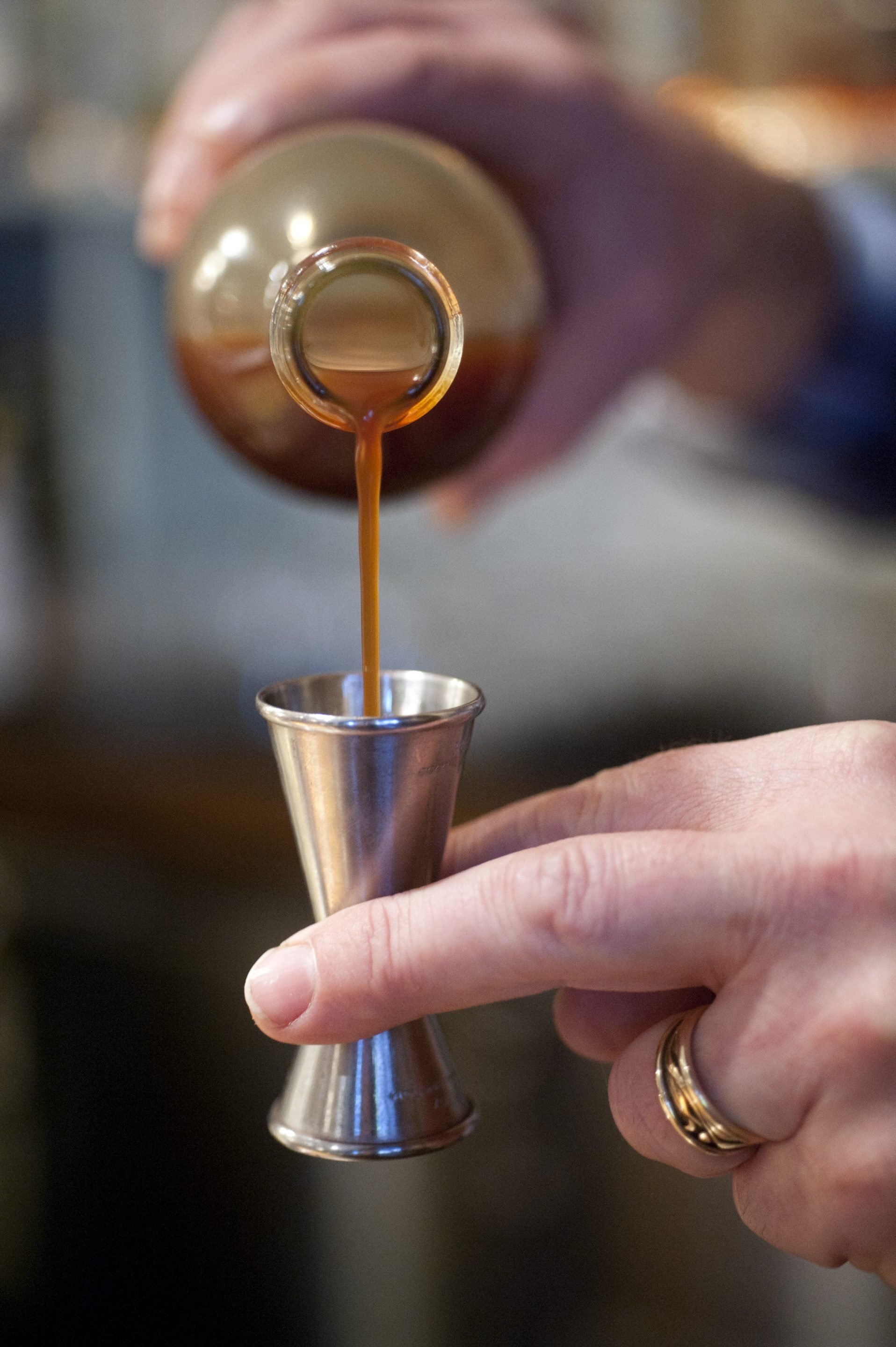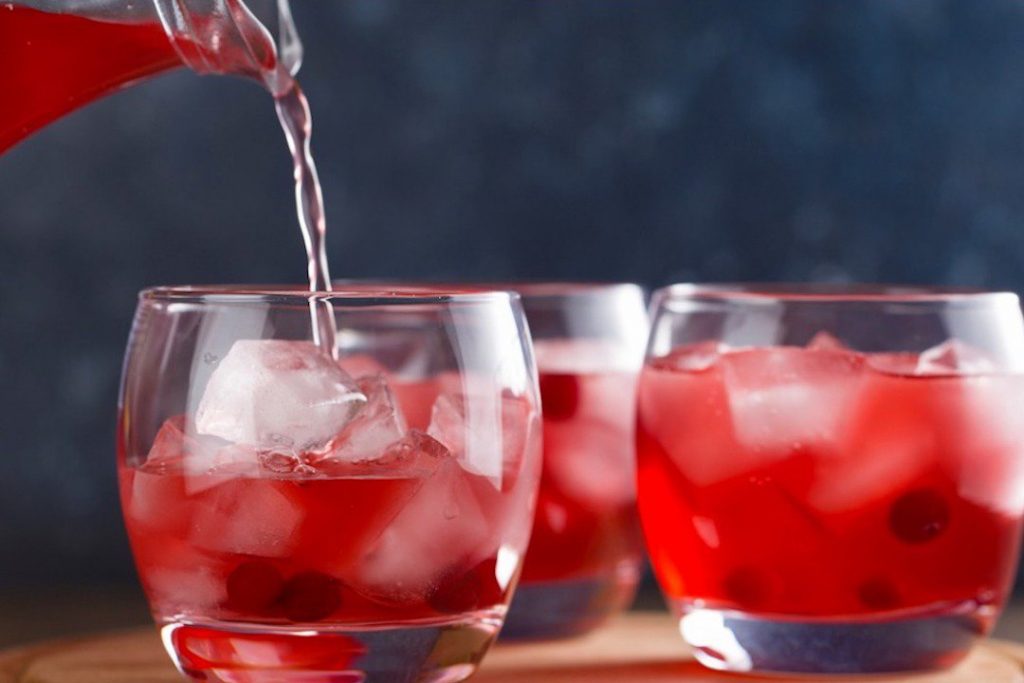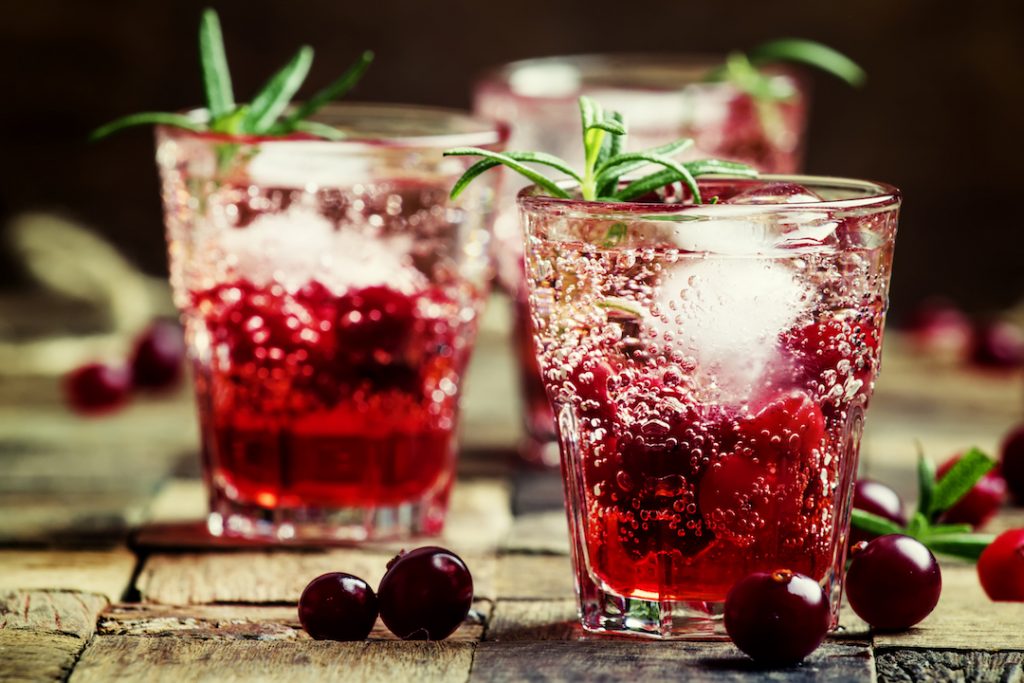
photo courtesy of Tom Richter
The Gin and Tonic—also known as a G&T, Gin-tonica (if you’re in Spain), Gin Sonic ( if Yas-San makes you one in Japan), GT (what’s up Norway?!), or the Ginto (if you find yourself in the Netherlands). On the surface, a Gin & Tonic appears to be a simple concoction: you pair a gin with a bottle of tonic, pour it in a glass, and off you go! What if I told you this seemingly simple highball not only has a fascinating history (look, you knew if we were writing about it there would be a history lesson), but is a wildly complex amalgamation of ingrediants that radically change depending on your gin, your garnishes, your ratios and, of course, your tonic syrup.
Say what?
Tonic syrup.
Oh, did you think we were talking about those cute little tonic bottles with the yellow labels my grandma kept behind her home bar right next to her mini slot machine? Put the tiny tonic down and grab your pennies for the slots, here’s my two cents on the history of tonic syrup.
A Brief History of Tonic

To fully understand tonic, we will be venturing to the Andes and talking about tree bark. Yeah, you read that right:
“In the district of the city of Loja, diocese of Quito, grows a certain kind of large tree, which has a bark like cinnamon, a little more coarse and very bitter, which, ground to powder is given to those who have a fever, and with only this remedy, it leaves them.” Bernabe Cobo (1582–1657), a Spanish Jesuit missionary and writer (Historia del Nuevo Mundo; cited by Greenwod et al.)
In the 1600’s, Jesuit missionaries in Peru caught on to the fact that the indigenous people were surviving fevers by ingesting the bark of a certain tree growing in the region. The bark of the Cinchona (or Quina) Tree contains quinine, which isn’t something anyone back in those days was aware of. However, the compound is effective in treating malaria, a pesky little parastic problem that was plaguing the Europeans as they expanded their respective empires. The Jesuits sent the bark off to Italy, where the curative properties were confirmed and cinchona powder began to turn up mixed in everything with the goal to cure whatever ails you.

Sidenote: it most certainly does not cure everything but it did clear the way for some serious colonization to happen.
As Nick Kokonas points out in Imbibe, “The most bitter part of this story is the consequences this demand created for Indigenous peoples in the tree’s native land. Workers tasked with collecting bark—many of them enslaved or indentured—were called cascarilleros, and were forced to traverse the mountainous regions of the Amazon for months with minimal provisions in atrocious conditions.”
So once the Europeans had their bark, they had to find a palatable way to ingest it because cinchona bark is bitter AF. The powdered bark wound up mixed in every concoction and with every spirit you can think of, along with a spoonful of sugar to make the medicine go down. Tonic syrup, anybody?

By the 1800s, quinine was able to be separated from the bark and turned into a pill. An advantageous discovery as sparkling water hits the scene in the mid 1700’s thanks to Joseph Priestly. In the mid 1800s we have sparkling water and quininine (Pitt’s Aerated Tonic Water, was patented in England on May 28, 1858) and circa the 1870s Schweppes launched their bottled tonic! The process of separating the quinine from the bark is what makes tonic water clear, cinchona bark is very, very, brown.
By the late 1800s there is a serious demand for cinchona to make tonic and the empires have a problem: Peru and Bolivia are now independent and transportation of cinchona saplings and seeds is forbidden. As you may have guessed, the superpowers did what they did best: they stole them. The pilfered seeds wound up in Java, where they thrived.
So just how, exactly, did gin enter the tonic chat? The OG carbonated tonic water was created as a medicinal product for the British in Africa and India, it contained so much quinine that even sugar couldn’t make it palatable. So the Brits did what they’d been doing since the craze of the 1700s: they added gin. Gin did more than make them tipsy, the compounds in juniper actually mirror the compounds in quinine, resulting in a sweeter taste! Science.

Want to learn more about tonic history?
Check out a few of our favorite books on the subject: Doctors & Distillers by Camper English and Fizz by Tristan Donovan both feature fab insight into the story of tonic!
Why Use Tonic Syrup?
Historically speaking, a lot of time and research went into getting the bubbles into the fizzy tonic water. Why on earth would we prefer using tonic syrup? I decided to call in my two fave resources on all matters tonic: Tom Richter, spirits professional, Formulist and Chief Bottle Washer – Tomr’s Tonic, and Mike Haber, profesional chef and creator of Haber’s Tonic.
True to form, Richter made me a handy list:
- 25 servings in a 750 ml bottle is a large step greener than a case of 25 bottles!
- So many times people would ask to split the tonic with soda (known as a Gin Sonic btw), now you have control from the start.
- I intended and still intend to put it into a gun system format.
- I wanted it for the creative bar folk of the world to use it how ever they like.
- It is already flat…so carbonation needs to be added…so no unintentional flat bottles of tonic any more.
“Tonic syrup is easier to transport,” adds Mike, “and you can also control the usage. At home or in bars what’s worse than opening a can or bottle of tonic for a drink then pouring the rest out when it goes flat? The tonic syrup allows you to make each drink individually. It’s also a bit showier when you build the drink in fancy bars”.
How Does One Begin Making Tonic Syrup?
“I always enjoyed gin and tonics,” Haber begins, “As a professional chef I am always curious as to how products are made and can I make them better. One afternoon I went down the tonic rabbit hole and found a few different recipes for making it. Of course I then set out to create my own tonic. A few batches later I settled on what I thought was my ideal ingredient mix. I started bringing the tonic syrup around to bar friends and it was overwhelmingly met with high praise. I went into business at the urging of friends and 12 years later it’s still running.”
“I was beverage Director for a renowned chef friend of mine in New Jersey and I wanted to do a really good cocktail program,” Richter chimes in, “in my experience, the most ordered cocktail consistently at that time was the gin and tonic – it’s not seasonal – I wanted a better gin and tonic. I started searching for what the original tonic was and I came across some recipes and history. I started making those recipes and they all kind of sucked except something about each of them was pretty good and I took good notes… and combined my favorite things and it was very close….Did one more pass… I adjusted one ingredient and that was it and that’s the same recipe I used to this day!”
“Tonic is made like you would make tea, Haber continues, “add a bunch of ingredients into water and brew. Once it’s flavored and strained, sweetener is added to make it into a syrup. The syrup plus carbonated water gives you tonic water.”
“I source ingredients from many places, but the thing I found in my journey is that cinchona bark is extremely, EXTREMELY, terroir driven,” Richter points out, “I was purchasing them from various herbal supply stores that got them from a specific country, but I knew that was unsustainable. So eventually, I figured it out, and I import directly from a harvester of cinchona from the terroir I prefer.”

Just what do we do with tonic syrup?
When it comes to a classic Gin & Tonic, both Haber and Richter opt for 1-2-3 constuction: 1 part tonic syrup, 2 parts gin, 3 parts soda water. Richter pairs his Tomr’s Tonic Syrup with juniper heavy london dry gin, while Haber opts for more citrusy and botanical gins to match with Haber’s Tonic. Haber also has gone beyond the traditional tonic syrup realm, creating over 12 flavors in total featuring combos like strawberry elderflower, mango black peppercorn, spicy cherry, and grapefruit honey. He experiments and collaborates with his bar partners to create seasonal flavors for their menus.
Beyond the G&T, their tonic syrups have been used to create flavorful and healthy non alcoholic cocktails (one of my personal fave applications!).
“Yoga instructors and triathletes use it to alleviate muscle cramps,” Richter adds.
Using the compound for leg cramps is one of the long debated benefits of quinine, check with your doctor if that’s of interest to you. We are gonna stick in our lane and recommend it as a tasty tipple.
“Bars often use tonic syrup as a flavoring in other cocktails,” volunteers Haber, “it has heavy citrusy notes and slight bitterness. Another person I knew would pour it on his ice cream but I’m not recommending that.”

photo courtesy of Tom Richter
Want to try tonic syrup in your G&T?
If you happen to be in the New York area, pop into Freeman’s Alley for Tomr’s Tonic (they were his first account) or to try Haber’s Tonic head to any of Sweet Afton’s family of bars. Tomr’s Tonic is also available on their website or via Amazon! And if you’ve tried any craft tonic syrups that you love, drop them in the comments below so we can check them out!
As Richter points out, “Life is too short to drink crappy tonic!”
We agree!

Jena is an event host & contributing writer for The Crafty Cask, as well as an award-winning bartender, cocktail educator, Cicerone Certified Beer Server, and Executive American Whiskey Steward. Based in NYC, Jena has been working in the craft alcohol world for the last 15 years with recipes appearing in Manhattan restaurant/bars & multiple publications. She is the 2019 Nikka Perfect Serve Global Runner Up and a 2020 Cognac Connection winner.


